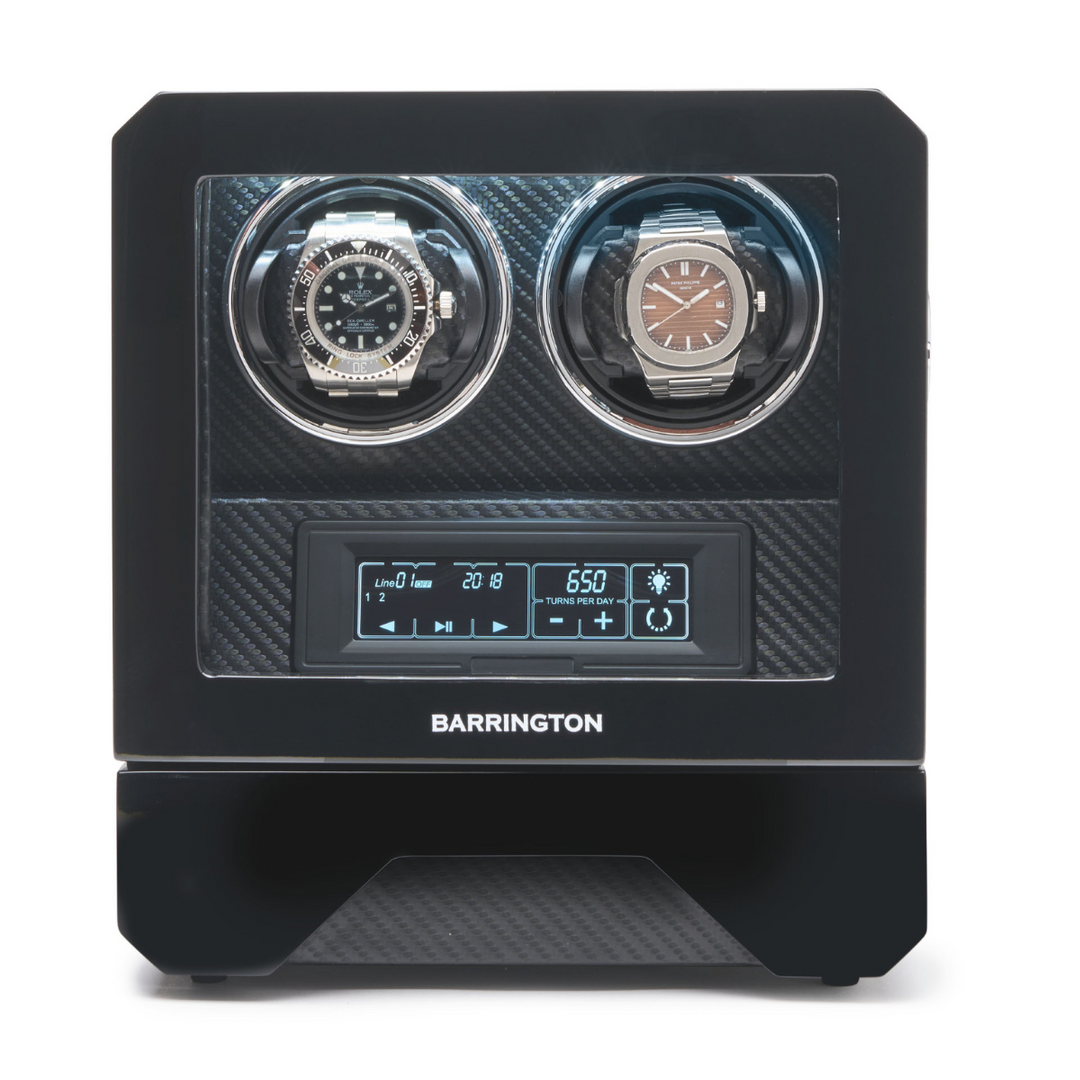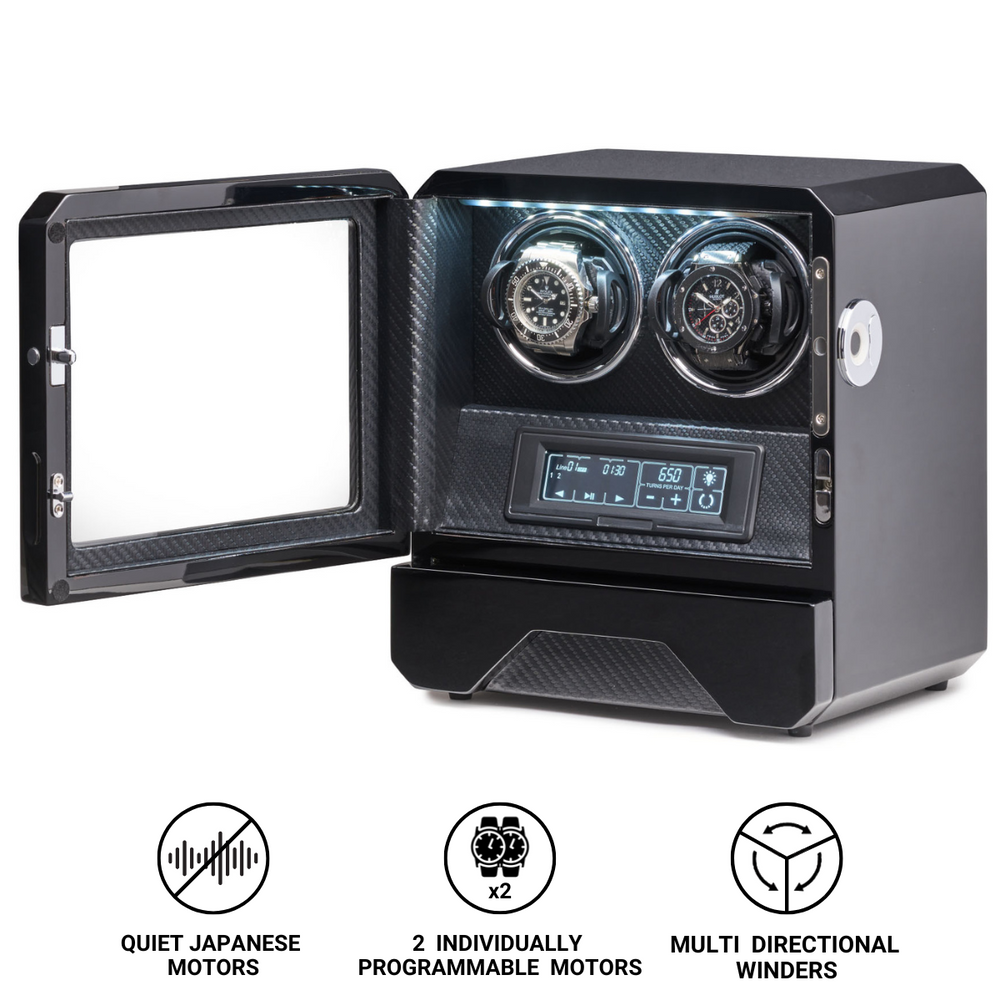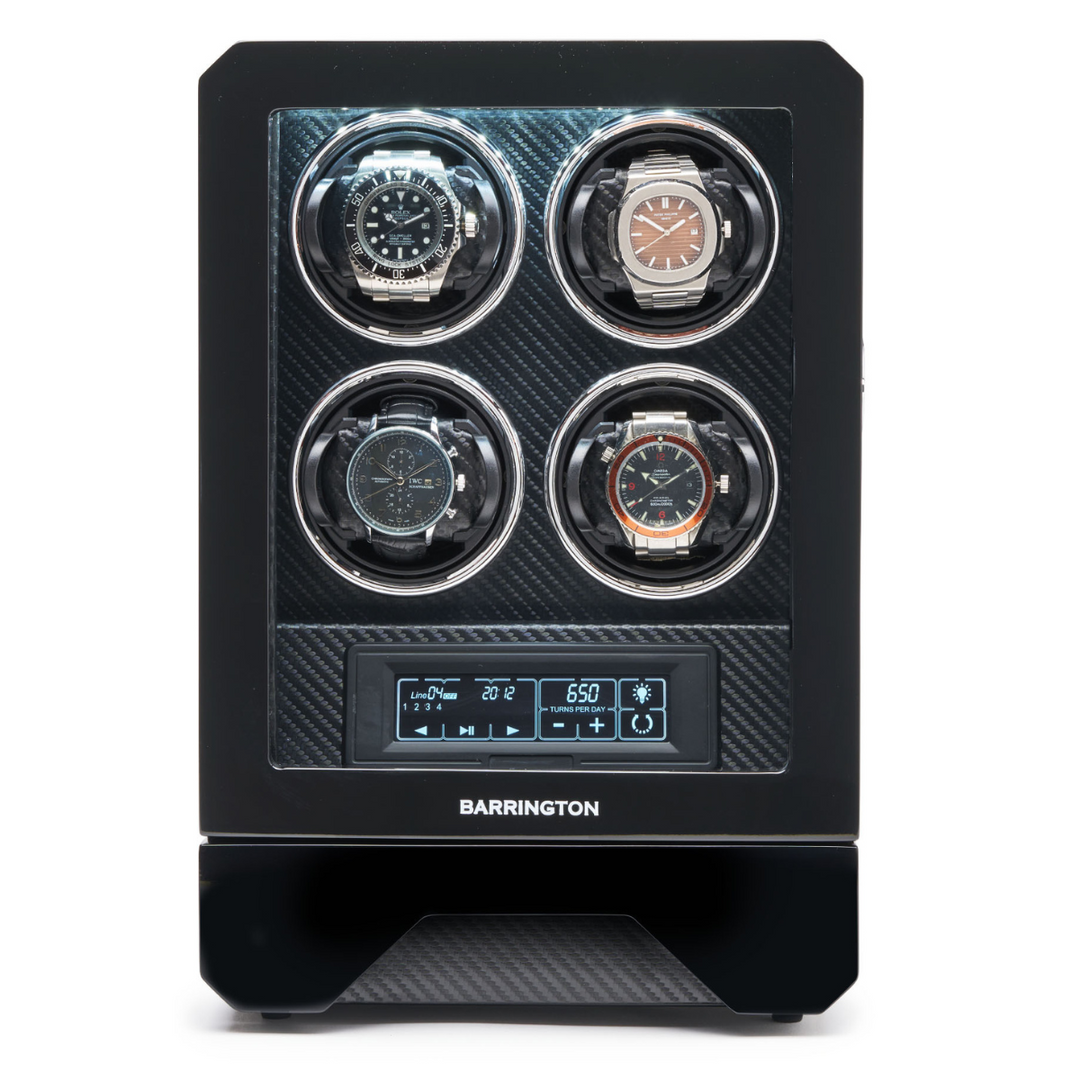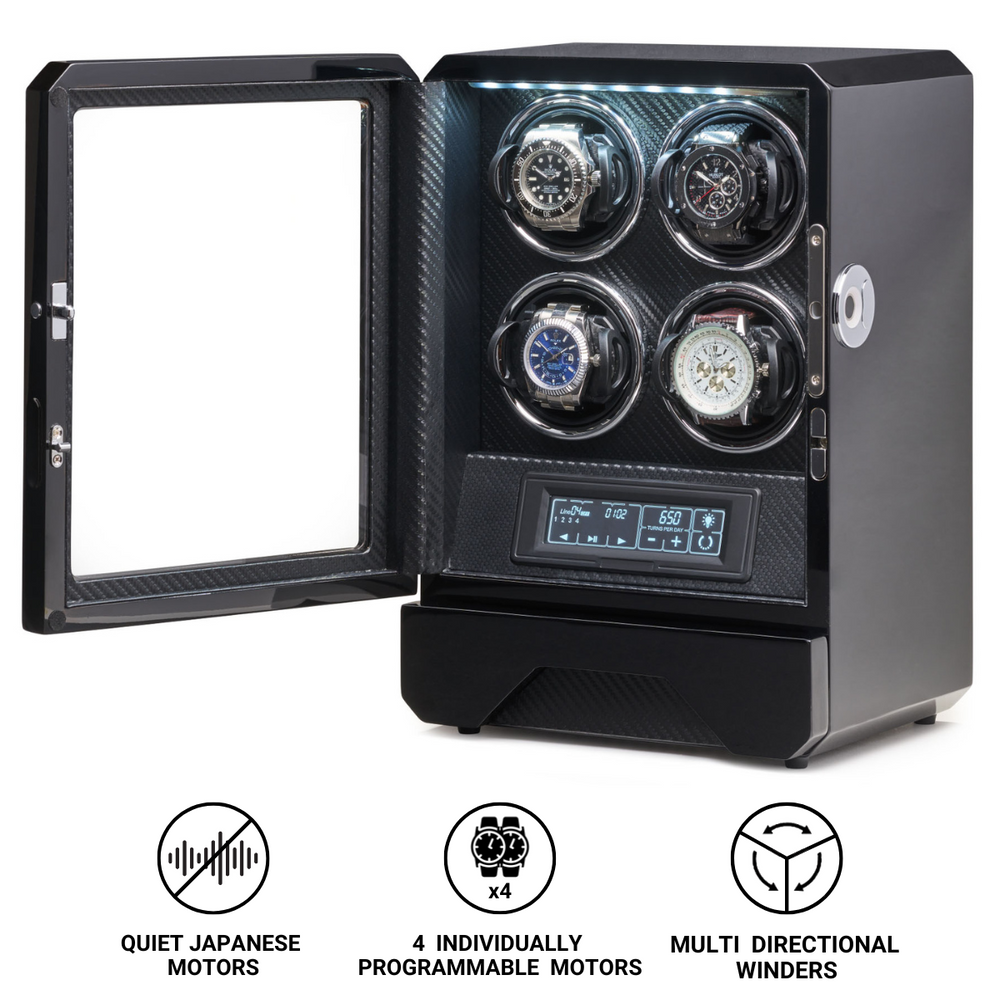What is Crown Guards?
Crown guards are one of the most recognisable and practical design features in modern watchmaking. These small protrusions on either side of the crown serve a simple yet crucial function: protecting one of the most delicate and essential parts of a watch from impact, wear, and accidental damage. The crown is the interface through which the wearer interacts with the movement, making it both vital and vulnerable. By adding structural protection around it, watchmakers enhance durability without compromising functionality.
Over the decades, crown guards have evolved from purely functional additions to iconic design elements that define entire collections. From military tool watches to luxury divers and aviation instruments, crown guards have become a symbol of toughness, precision, and reliability.
The Origins of Crown Guards
The development of crown guards is closely tied to the evolution of wristwatches as practical instruments rather than ornamental accessories. Early wristwatches, particularly those produced in the early 20th century, were adapted from pocket watches. These lacked the structural reinforcement needed for the more exposed position on the wrist, leaving the crown susceptible to shocks, bending, or even breaking.
During the 1930s and 1940s, as wristwatches gained popularity among soldiers, aviators, and divers, the need for additional protection became clear. Watches were increasingly used in demanding environments where collisions and impacts were common. A damaged crown could compromise a watch’s functionality or its ability to remain watertight, particularly in military and diving contexts where precision and reliability were essential.
The first watches to feature crown guards appeared in the mid-20th century. These early designs were often custom modifications for military use. One of the most famous early adopters was Panerai, whose watches made for the Italian Navy featured prominent protective bridges around the crown to prevent water ingress and mechanical failure. Other brands soon followed, incorporating crown guards into their designs to meet the growing demand for rugged and functional timepieces.
The Purpose of Crown Guards
The crown is one of the few external parts of a watch movement that extends beyond the case, which makes it vulnerable to damage. It can be accidentally hit against surfaces, snag on clothing or equipment, or bend under pressure. Such impacts can cause misalignment of the stem, compromise the gaskets, or even damage the movement inside.
Crown guards serve several key purposes:
-
Physical Protection
The most obvious function is to shield the crown from direct impact. The guards act as a buffer, absorbing shocks that might otherwise bend or break the crown stem. This protection is especially critical in tool watches such as divers, military pieces, and sports chronographs that are designed for active use. -
Water Resistance and Seal Integrity
In many modern watches, especially diving models, water resistance depends heavily on the integrity of the crown seal. A hit to the crown can dislodge gaskets or compromise the screw-down mechanism, allowing water or dust to enter the case. Crown guards reduce this risk by preventing lateral pressure or twisting forces on the crown. -
Ergonomic and Aesthetic Balance
Beyond their functional role, crown guards contribute to the visual and tactile balance of a watch. They can make the case appear more robust and symmetrical, reinforcing the design language of strength and durability. Properly designed crown guards ensure that the crown remains accessible without being intrusive or uncomfortable against the wrist.
Types of Crown Guard Designs
Over time, watchmakers have developed various styles of crown guards, each suited to different purposes and aesthetic philosophies. While their primary role remains protection, the form they take can greatly influence a watch’s character.
-
Integrated Crown Guards
These are the most common and are machined directly into the case itself. The guards form a seamless part of the case body, offering strength and rigidity. Integrated guards are seen in many professional tool watches, including the Rolex Submariner and Omega Seamaster. They are highly resistant to impact and add a cohesive look to the case design. -
Separate or Attached Crown Guards
Some watches feature crown guards that are attached as separate components, fixed to the case by screws or pins. This construction allows for easier replacement or repair if the guards are damaged. It is also found in certain military or field watches where modularity and serviceability are priorities. -
Crown Locking Bridges
A distinct variant popularised by Panerai, the locking bridge system not only protects the crown but also secures it in place. The lever mechanism presses the crown tightly against the case, ensuring water resistance and preventing accidental movement. This design has become an iconic feature of Panerai watches and remains one of the most recognisable examples of functional crown protection in horology. -
Minimalist and Recessed Designs
In some modern watches, rather than external guards, the case itself is shaped to recess the crown partially into its side. This subtle design achieves protection without prominent protrusions. Such an approach is often used in dress or pilot watches, where sleekness and comfort are prioritised over rugged aesthetics.
Each of these approaches represents a balance between functionality, aesthetics, and ergonomics. While some brands emphasise bold, architectural guards, others prefer refined designs that provide discreet protection.
Crown Guards in Diving and Military Watches
Crown guards have become synonymous with professional diving watches, where reliability and toughness are paramount. Underwater environments exert tremendous pressure on a watch case, and even minor crown damage can compromise water resistance. For this reason, nearly every modern diver’s watch incorporates crown guards as part of its design.
Rolex was one of the pioneers in this area, introducing crown guards in the late 1950s on the Submariner models. Early versions had small, pointed guards, which were later reshaped into the rounded form familiar today. The introduction of these guards helped establish the Submariner as a benchmark for robust, functional design.
Omega followed with its Seamaster line, incorporating pronounced guards into its cases to meet the demands of professional divers. Seiko, Citizen, and other Japanese brands also contributed to the evolution of this feature, focusing on practical engineering for tool watches used in harsh conditions.
In the military world, crown guards became standard issue for watches supplied to armed forces. Soldiers and pilots needed watches that could endure rough handling and still operate flawlessly. The addition of crown guards helped prevent mission-critical failures caused by physical impact or accidental adjustment of the crown. Brands like Hamilton, Marathon, and CWC all produced military watches with distinctive crown guard designs that balanced protection and usability.
Aesthetic Influence of Crown Guards
Although crown guards were developed out of necessity, they have become a defining aesthetic element in watch design. Their shape and execution can dramatically alter a watch’s personality, transforming it from a simple timepiece into a statement of strength and capability.
Rounded or tapered crown guards lend a balanced and harmonious look, while angular or block-like designs convey ruggedness and industrial precision. In sports and diving watches, large and pronounced guards emphasise durability, while in more refined pieces, subtle, sculpted guards preserve elegance while adding practicality.
Crown guards also influence how a watch feels on the wrist. Properly designed guards ensure that the crown does not dig into the skin, especially during active movement. This ergonomic consideration has become as important as visual balance, ensuring that watches with crown guards remain comfortable for daily wear.
In some modern designs, crown guards are used as a stylistic signature. Brands often shape them in distinctive ways to create a unique silhouette. For example, the broad, curved guards of the Submariner are instantly recognisable, while the square, angular guards of the Tudor Pelagos communicate a more contemporary character.
Materials and Engineering Considerations
Crown guards must be as strong and resilient as the case they protect. They are typically crafted from the same material as the watch case, such as stainless steel, titanium, bronze, or ceramic. Each material offers distinct advantages.
-
Stainless Steel provides excellent impact resistance and ease of machining. It remains the most common material used in crown guard construction.
-
Titanium offers a high strength-to-weight ratio and superior corrosion resistance, ideal for professional diving or aviation watches.
-
Ceramic provides scratch resistance and visual sharpness but requires precision engineering due to its brittleness.
-
Carbon Composites and Forged Materials are increasingly used in high-performance watches, combining strength with lightweight construction.
In tool watches, crown guards are often machined directly into the case block to maximise integrity. Precision CNC milling allows for seamless transitions between the case and guards, ensuring both strength and aesthetic refinement.
The Evolution of Crown Guards in Modern Watchmaking
While early crown guards were purely functional, their role in contemporary watchmaking has expanded. Today, they are both a practical feature and a design signature. Modern materials and machining techniques have enabled watchmakers to experiment with more sculptural and complex shapes.
Some luxury brands have reimagined the crown guard entirely, integrating it into avant-garde case designs. Others use it to evoke nostalgia, recreating the shapes of vintage models that defined the mid-20th century. The balance between protection and visual appeal continues to evolve, reflecting broader trends in design and innovation.
Even minimalist watches, which traditionally avoid external protrusions, sometimes feature subtle crown protection in the form of recesses or asymmetrical lugs. These discreet adaptations prove that the principle of protection can coexist with elegance.
Conclusion
Crown guards may appear as a small detail, yet they represent a critical advancement in the functional evolution of wristwatches. What began as a utilitarian feature designed to shield a fragile mechanism has become an enduring symbol of reliability, strength, and thoughtful engineering.
From the early military and diving watches that established their importance to the modern luxury timepieces that refine their form, crown guards continue to embody the intersection of practicality and artistry. They remind us that in watchmaking, even the smallest structural detail can define the identity of a timepiece.
Whether bold and sculpted or subtle and refined, crown guards are a testament to the watchmaker’s commitment to durability and design harmony. They protect not just the crown, but the integrity of the entire watch, ensuring that timekeeping remains precise and resilient in every condition.









